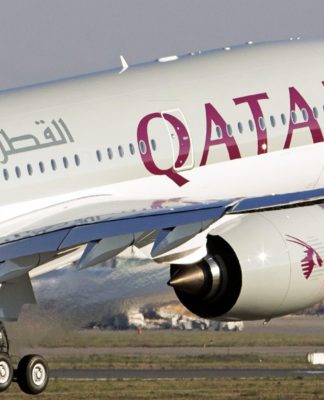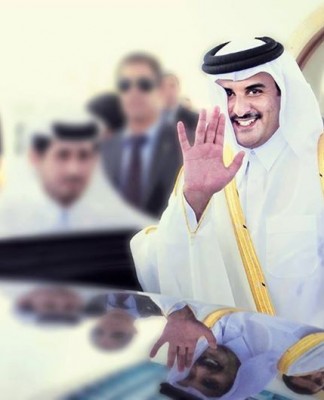POLITICSISRAEL
Hamas: Learning about drone warfare from the war in Ukraine
Dmytro Kaniewski
13 hours ago13 hours ago
Drones have long been part of modern warfare. Their deployment has been observed in many armed conflicts in recent years, including in Syria, Ukraine and the Nagorno-Karabakh conflict.
https://p.dw.com/p/4XpsI
Shelling in a village
A screen in a Ukrainian drone command center. Drones are being used on both sides in Russia’s war on Ukraine.Image: DW
Using military drones has been part of modern warfare for some time now. But Russia’s war on Ukraine marked a new milestone in drone warfare. Remodeled commercial drones deemed inappropriate for combat until recently were used for targeted, large-scale attacks for the first time.
Military experts say Hamas terrorists used these types of drones to facilitate their October 7 attacks on Israeli border towns.
The militants deployed adapted commercial quadcopter drones developed by the Chinese firms DJI and Autel, they say.
Russland Woronesch | Zerstörtes Wohngebäude nach Drohnen AbsturzRussland Woronesch | Zerstörtes Wohngebäude nach Drohnen Absturz
A residential building hit by a drone by mistake in Russia. The drone was supposed to attack a nearby aircraft plant, security agencies say.Image: Yevgeny Sudakov/TASS/IMAGO
A new development
Hamas wreaked serious strategic damage on the Israel Defense Forces in its October 7 attacks, which killed more than 1,400 people. Hamas is classified by the United States, the European Union, Israel and some Arab states as a terrorist organization.
Hamas video footage shows drones dropping explosive devices that disabled or “blinded” surveillance towers along Israel’s entire border fence with the Gaza Strip. Until now, these structures were considered impenetrable.
To fully understand these attacks, it helps to look to the Ukraine war. Almost from the get-go in its 2022 invasion, Russia deployed commercial drones carrying explosive devices. These days, the weapons are used by both sides.
While in Russia’s invasion of Ukraine these drones are used against soldiers and armored vehicles, Hamas used them on Israeli military infrastructure.
“The way Hamas has used drones is new. We haven’t seen that before,” Carlo Masala of the University of the Bundeswehr (the German Armed Forces) in Munich told the German news magazine Der Spiegel. Hamas terrorists closely copied methods used in Ukraine, he said.
Hamas propaganda videos also show drones dropping shells on an Israeli tank crew, even hitting a $3.5 million Merkava 4 tank, which at 63 tons is considered the world’s heaviest in production.
Liran Antebi oversees high-tech programs and national security issues at the Institute for National Security Studies (INSS) in Tel Aviv. She has studied the deployment of drone technology in conflicts for over a decade and closely follows Russia’s war against Ukraine. But even she was “surprised by the unexpected and complex use of Hamas drones,” she said.
“This proves that, even if they are technologically quite primitive, they can be much deadlier in a complex mission than we previously would have admitted,” the researcher told DW.
Merkava tankMerkava tank
An Israeli Merkava tank near Israel’s border with LebanonImage: Jalaa Marey/AFP/Getty Images
Terror group IS used drones
The fact Hamas has drones at its disposal is nothing new. But the group clearly built up its arsenal ahead of the lethal assault on October 7.
Commercial drones are “cheap, easy to snap up on the market and can be set off from anywhere in a few seconds along a precise route with virtually no prior knowledge,” said drone technology expert Yair Ansbacher in comments to the Israeli business newspaper Globes. “But the number and scale of the use of drones in the Middle East does not come close to that in Ukraine.”
Liran Antebi recalls that it was originally in the Middle East that such drones were converted for combat purposes — the Islamic State (IS) terrorist organization used very basic ones against US forces.
“Later we saw it in Ukraine, and now we see it here as well,” Antebi said.
Hamas confirmed the use of 35 “Zouari” drones in the October 7 attacks. These drones, which are made by Hamas, are named after the former head of the terror group’s drone program, Tunisian engineer Mohamed Zouari.
Zouari was killed in 2016. His death has been widely attributed to Mossad, Israel’s national intelligence agency.
Who finances Hamas’ weapons program?
Many experts are convinced that Hamas’ entire weapons program is funded from abroad.
Iran transfers $100 million to the group every year, according to the US State Department’s 2020 Country Terrorism Report. Hamas has never disputed this, but has said the amount is less.
According to the Washington Post newspaper, Iranian allies have supported Hamas terrorists with military training, logistical and financial aid. This information can however not be verified.
Some observers suspect that Russian forces could also be involved in the training of Hamas fighters.
“All of them — Islamic Jihad, Hamas and others — get trained in Syria. It is clear that Russians as trainers with unique experience are involved,” Ihor Semyvolos, the director of the Center for Middle Eastern Studies in Kyiv, told DW.
Russia is an ally of the Syrian regime but there is so far no evidence of direct Russian support for Hamas. Israeli journalist Nadav Eyal, however, reports that Russian weapons were left behind by Hamas fighters at the site of the October 7 terrorist attacks.
According to the Israeli newspaper Haaretz, Iran has armed the Hamas assault unit Nukhba to the teeth with Russian-made weapons – from Kalashnikov assault rifles to Strela anti-aircraft missiles.
“We have seen the direct and indirect consequences of the connection between Russia, Iran and Hamas on the streets and in the homes, in the once idyllic clearings of cities and towns in the areas bordering the Gaza Strip which now have become ruins,” the paper’s columnist Yossi Melman writes.
There’s been no official Israeli statement on the issue. The military is currently preparing for a ground operation in the Gaza Strip.
Frank Ledwidge, a former British intelligence officer with experience in crisis areas, told DW that he expects the Israel-Hamas war to be a high-tech conflict “with heavy use of drones, tunnels, artillery fire and air strikes.”
Security expert Liran Antebi suggests already paying attention to AI technologies available to the general public. She warns that in the near future, terrorist groups around the world might begin using them for deadly ends.
IDF spokesperson: ‘The people of Gaza are not the enemy’
08:31
This article was originally written in Russian.






























